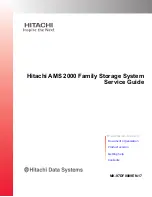
Product Features
XL500S
16
RELEASED 10/21/10 (WD CONFIDENTIAL)
2679-701211-A06
3.2
Perpendicular Magnetic Recording (PMR)
In perpendicular magnetic recording (PMR), the magnetization of each data bit is aligned
vertically to the spinning disk, rather than longitudinally as has been the case in hard drive
technology for decades. In longitudinal recording, as the bits become smaller and closer
together, they experience an increasing demagnetizing field, much like two bar magnets that
are placed end-to-end repel one another. A property of the media called coercivity must be
increased to counteract the demagnetization to keep the bits stable under thermal
fluctuations; otherwise data corruption may occur over time. Higher media coercivity has
pushed the recording head write field to the limit of known materials.
In perpendicular recording, the adjacent bits attract instead of repel (as with bar magnets
placed side by side,) creating more thermally stable bits. In addition, the media contains a
magnetically soft underlayer (SUL) beneath the recording layer. This SUL allows a larger
effective write field, thus higher coercivity media, enabling further increases in density. Lastly,
because of the vertical orientation of the bits, the PMR recording layer tends to be thicker than
that used for longitudinal recording, providing increased signal for the read heads. All of these
benefits enable WD engineers to reliably pack more data on a given disk than is possible with
conventional longitudinal recording.
3.3
IntelliSeek
WD’s unique IntelliSeek technology proactively calculates an optimum seek speed to
eliminate hasty movement of the actuator that produces noise and requires power, which is
common in other drives. With IntelliSeek, the actuator’s movement is controlled so the head
reaches the next target sector just in time to read the next piece of information, rather than
rapidly accelerating and waiting for the drive rotation to catch up. This smooth motion reduces
power usage by more than 60 percent compared with standard drives, as well as quiets seek
operation and lowers vibration.
3.4
NoTouch Ramp Load Technology
Parks the recording heads off the disk surface during spin up, spin down and when the drive is
off. This ensures the recording head never touches the disk surface resulting in improved long
term reliability due to less head wear, and improved non-operational shock tolerance.
3.5
Native Command Queuing (NCQ)
These drives support Native Command Queuing. NCQ is a true Enterprise feature for
environments such as database, Web servers, and e-mail servers.
Performance of a random I/O workload can be improved through intelligent re-ordering of the
I/O requests so they read/write to and from the nearest available sectors and minimize the
need for additional disk revolutions or head actuator movement. This improvement is achieved
though Native Command Queuing (NCQ).
NCQ allows the drive to re-order read commands, thereby increasing random read IOPs.
Additional NCQ features that can prove beneficial include a Write Cache disabled IOP
increase and a queuing implementation built upon an existing, highly automated cache
architecture. Queued reads in NCQ leverage the same re-ordering schemes used for write
caching. The firmware design maintains the "order" of overlapping/colliding queued
commands. NCQ is designed to excel in multi-threaded environments with high random I/O
loads.
3.6
Pre-emptive Wear Leveling (PWL)
This WD feature provides a solution for protecting the recording media against mechanical
wear. In cases where the drive is so busy with incoming commands that it is forced to stay in
















































